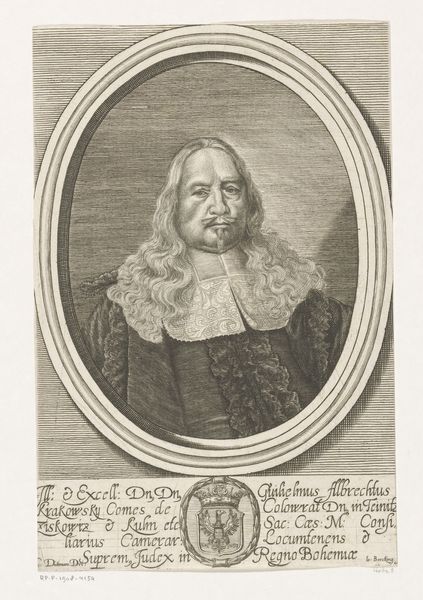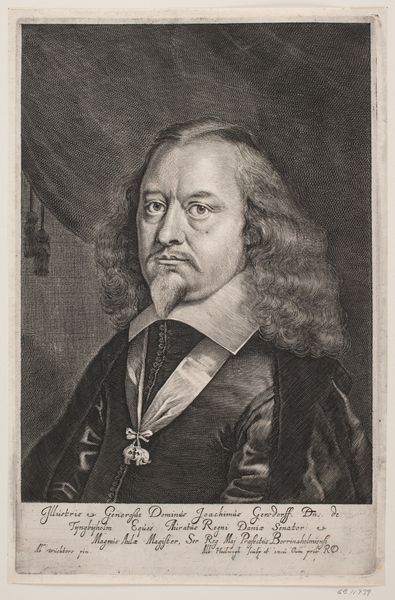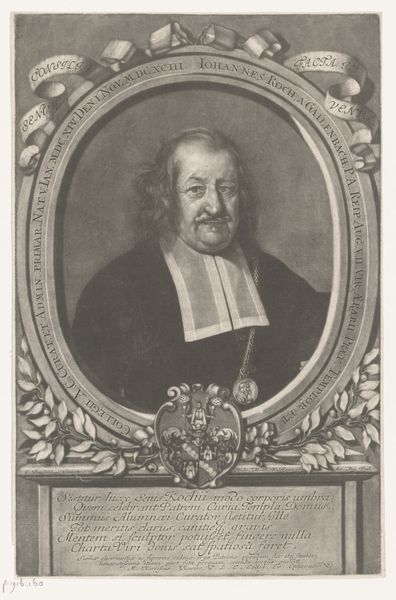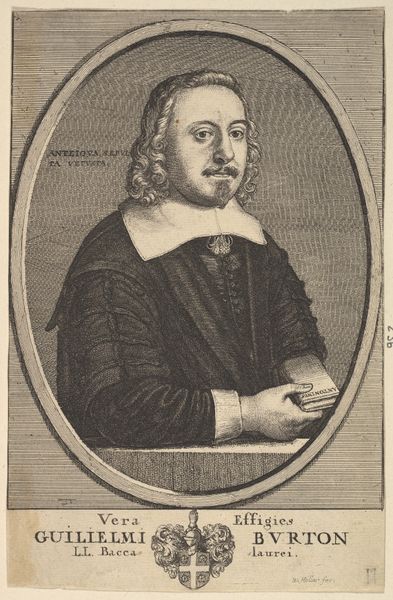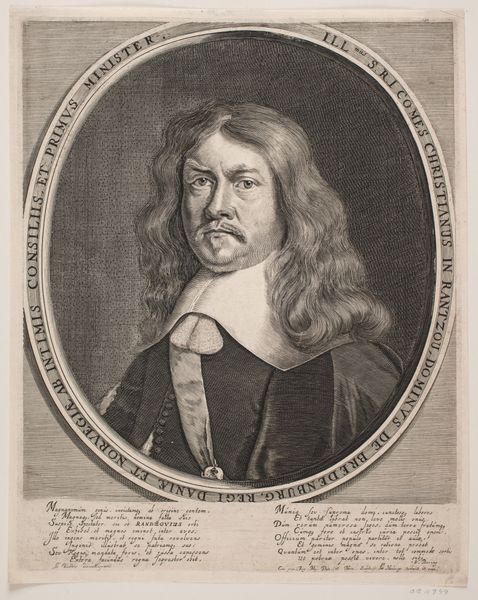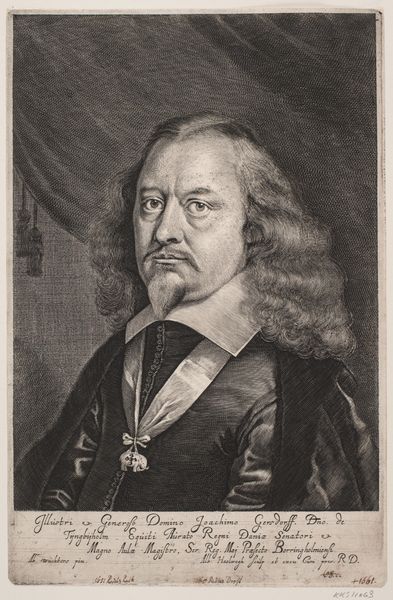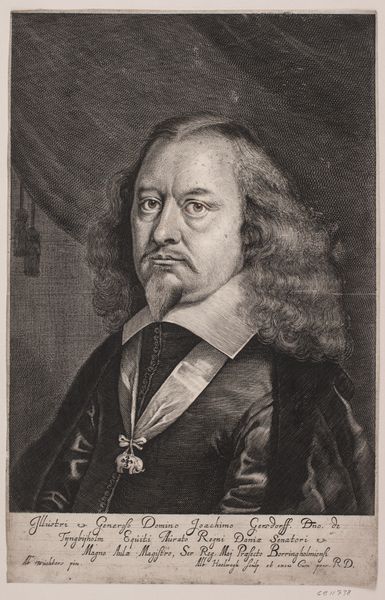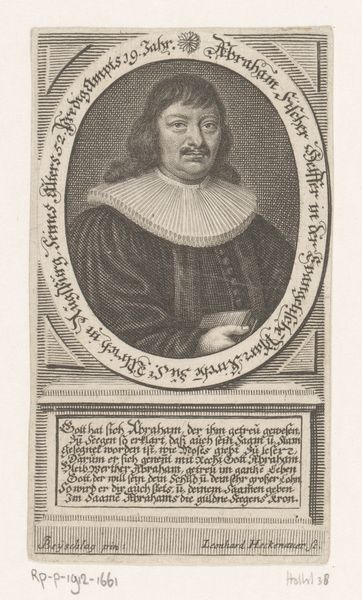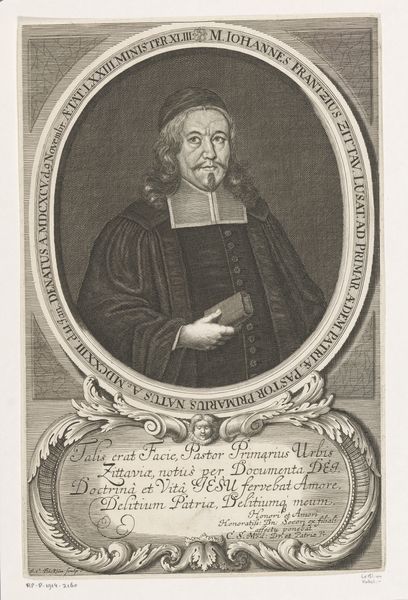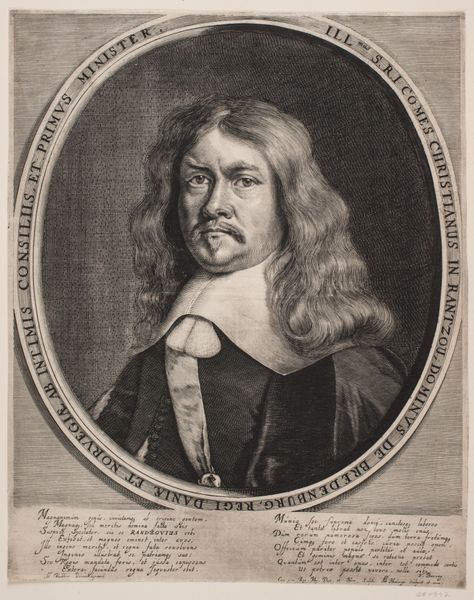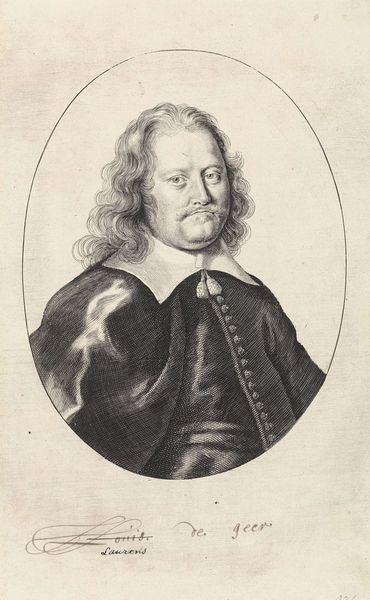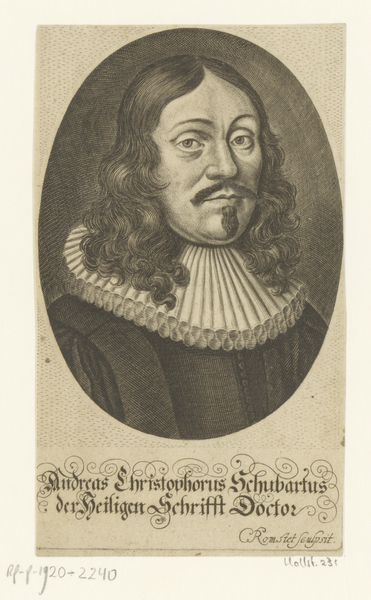
print, engraving
#
portrait
#
baroque
# print
#
line
#
history-painting
#
engraving
Dimensions: 170 mm (height) x 109 mm (width) (bladmaal)
Curator: Here we have a portrait print of Gödert Braem, created between 1653 and 1657 by Albert Haelwegh. It’s currently held at the SMK, the National Gallery of Denmark. Editor: My first thought is that this is exquisitely rendered. Look at the detailed lines, the varied densities creating such dimensionality, all from the simple act of engraving. It's powerful. Curator: The process is fascinating, isn’t it? Haelwegh, likely using a burin, meticulously cut lines into a metal plate. The ink then held in these lines and transferred to the paper. Think of the precision, the labor involved in creating this image, a reproducible image nonetheless, made accessible by print technology. Editor: Absolutely. And prints like these served a vital function within society. They weren’t just art objects. This piece provides insight into how influential figures wanted to be presented and remembered in 17th century Denmark. It’s history materialized! What do you think is most striking about it? Curator: Well, to me, it's the details surrounding Braem, almost as important as the man himself. There is an emblem at the top and an actual seascape happening on the left background which are ripe for discussion. Who do you think Braem was? And why would Albert decide to put all those different layers within the composition? Editor: Gotthardus Braem was a prominent merchant and councillor in Copenhagen. His role surely informed the staging we see in this piece: behind him, a landscape filled with shipping vessels; at his feet, a globe to suggest not just his power, but Denmark's influence. It highlights the relationship between trade and the consolidation of power during this time, influencing even what portraiture can suggest and evoke. Curator: Indeed, printmaking democratized access to portraiture. The work served as a material declaration of not just status, but also of trade's important presence in 17th century Denmark. A powerful reminder of the societal impact this process created, not always present with single art pieces made through "classical" arts processes, no? Editor: Precisely. Looking closely connects us to this rich, historical network that gave the print meaning. The texture, labor and symbolism—they bring the past vividly to life, it is much to observe from it. Curator: Yes, I couldn't agree more, to consider prints not only as artworks but also as tangible manifestations of a specific time and its manufacturing possibilities gives a more intimate grasp of social and political undercurrents, especially in Denmark in this case.
Comments
No comments
Be the first to comment and join the conversation on the ultimate creative platform.
